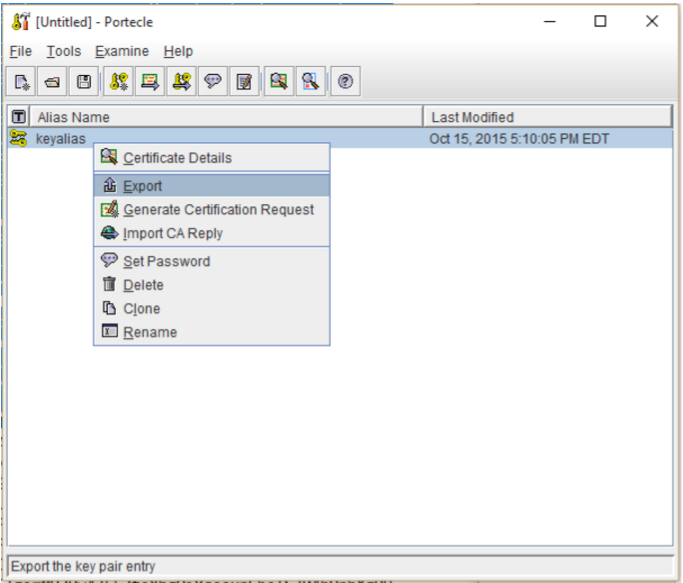Generating An Ssh Key Github
This version of GitHub Enterprise will be discontinued on This version of GitHub Enterprise was discontinued on 2019-10-16. No patch releases will be made, even for critical security issues. For better performance, improved security, and new features, upgrade to the latest version of GitHub Enterprise.For help with the upgrade, contact GitHub Enterprise support.
To configure your GitHub Enterprise account to use your new (or existing) SSH key, you'll also need to add it to your GitHub Enterprise account. Mann co supply crate key generator download.
- Generating a new SSH key. Open Terminal Terminal Git Bash the terminal. Paste the text below, substituting in your GitHub Enterprise email address. $ ssh-keygen -t rsa -b 4096 -C ' youremail@example.com '. When you're prompted to 'Enter a file in which to save the key.
- How to Create an SSH Key. SSH keys are generated through a public key cryptographic algorithm, the most common being RSA or DSA. At a very high level SSH keys are generated through a mathematical formula that takes 2 prime numbers and a random seed variable to output the public and private key.

For recommendations, see options for SSH keys. Generating a new SSH key pair. If you want to create: An ED25519 key, read ED25519 SSH keys. An RSA key, read RSA SSH keys. ED25519 SSH keys. The book Practical Cryptography With Go suggests that ED25519 keys are more secure and performant than RSA keys.
Putty Generate Ssh Key Github
Before adding a new SSH key to your GitHub Enterprise account, you should have:
After adding a new SSH key to your GitHub Enterprise account, you can reconfigure any local repositories to use SSH. For more information, see 'Switching remote URLs from HTTPS to SSH.'
Creating An Ssh Key For Github

Note: DSA keys were deprecated in OpenSSH 7.0. If your operating system uses OpenSSH, you'll need to use an alternate type of key when setting up SSH, such as an RSA key. For instance, if your operating system is MacOS Sierra, you can set up SSH using an RSA key.
Copy the SSH key to your clipboard.
If your SSH key file has a different name than the example code, modify the filename to match your current setup. When copying your key, don't add any newlines or whitespace.
Tip: If
pbcopyisn't working, you can locate the hidden.sshfolder, open the file in your favorite text editor, and copy it to your clipboard.In the upper-right corner of any page, click your profile photo, then click Settings.
In the user settings sidebar, click SSH and GPG keys.
Click New SSH key or Add SSH key.
In the 'Title' field, add a descriptive label for the new key. For example, if you're using a personal Mac, you might call this key 'Personal MacBook Air'.
Paste your key into the 'Key' field.
Click Add SSH key.
If prompted, confirm your GitHub Enterprise password.
Copy the SSH key to your clipboard.
If your SSH key file has a different name than the example code, modify the filename to match your current setup. When copying your key, don't add any newlines or whitespace.
Tip: If
clipisn't working, you can locate the hidden.sshfolder, open the file in your favorite text editor, and copy it to your clipboard.In the upper-right corner of any page, click your profile photo, then click Settings.
In the user settings sidebar, click SSH and GPG keys.
Click New SSH key or Add SSH key.
In the 'Title' field, add a descriptive label for the new key. For example, if you're using a personal Mac, you might call this key 'Personal MacBook Air'.
Paste your key into the 'Key' field.
Click Add SSH key.
If prompted, confirm your GitHub Enterprise password.
Copy the SSH key to your clipboard.
If your SSH key file has a different name than the example code, modify the filename to match your current setup. When copying your key, don't add any newlines or whitespace.
Tip: If
xclipisn't working, you can locate the hidden.sshfolder, open the file in your favorite text editor, and copy it to your clipboard.In the upper-right corner of any page, click your profile photo, then click Settings.
In the user settings sidebar, click SSH and GPG keys.
Click New SSH key or Add SSH key.
In the 'Title' field, add a descriptive label for the new key. For example, if you're using a personal Mac, you might call this key 'Personal MacBook Air'.
Paste your key into the 'Key' field.
Click Add SSH key.
If prompted, confirm your GitHub Enterprise password.
